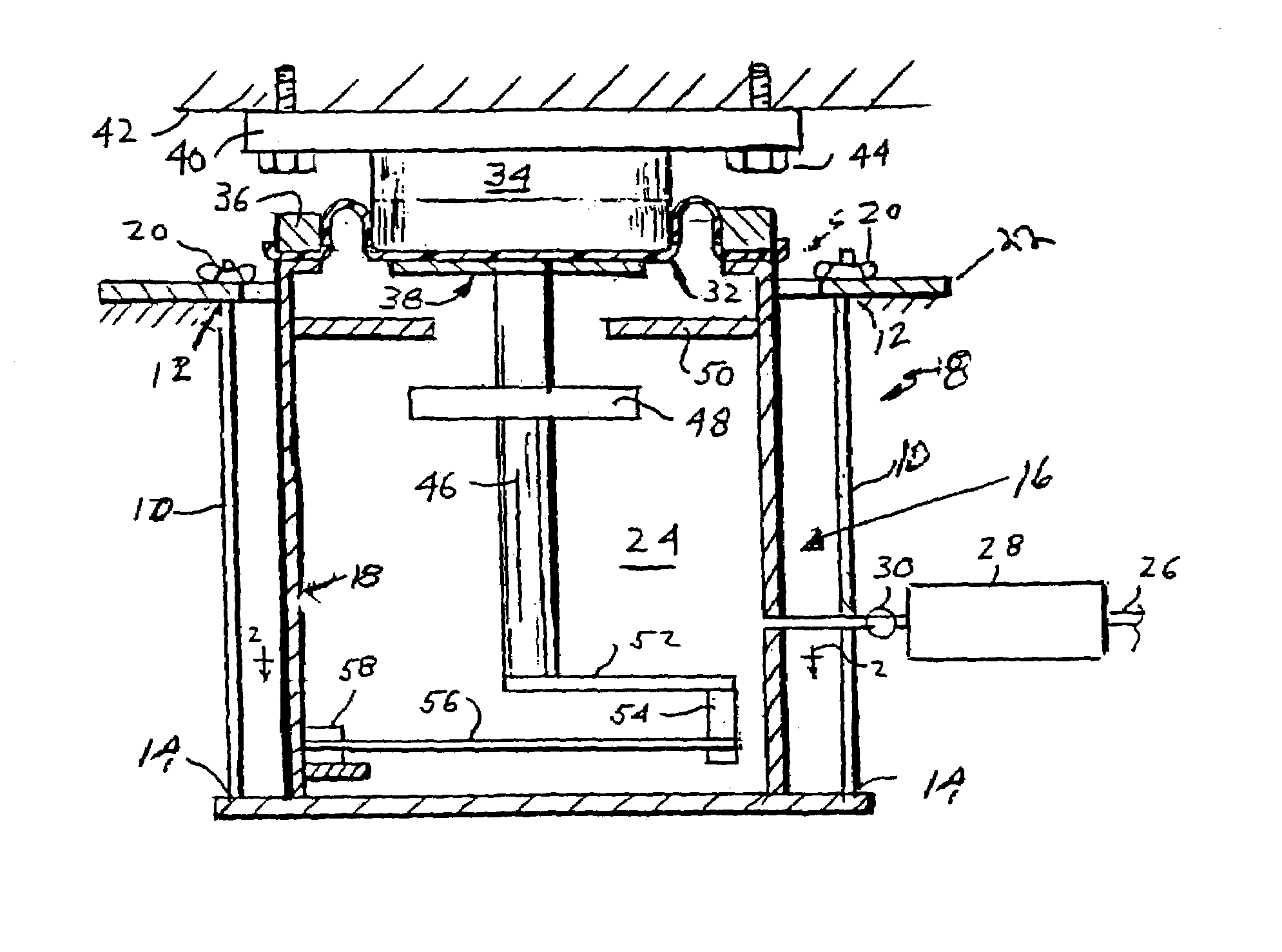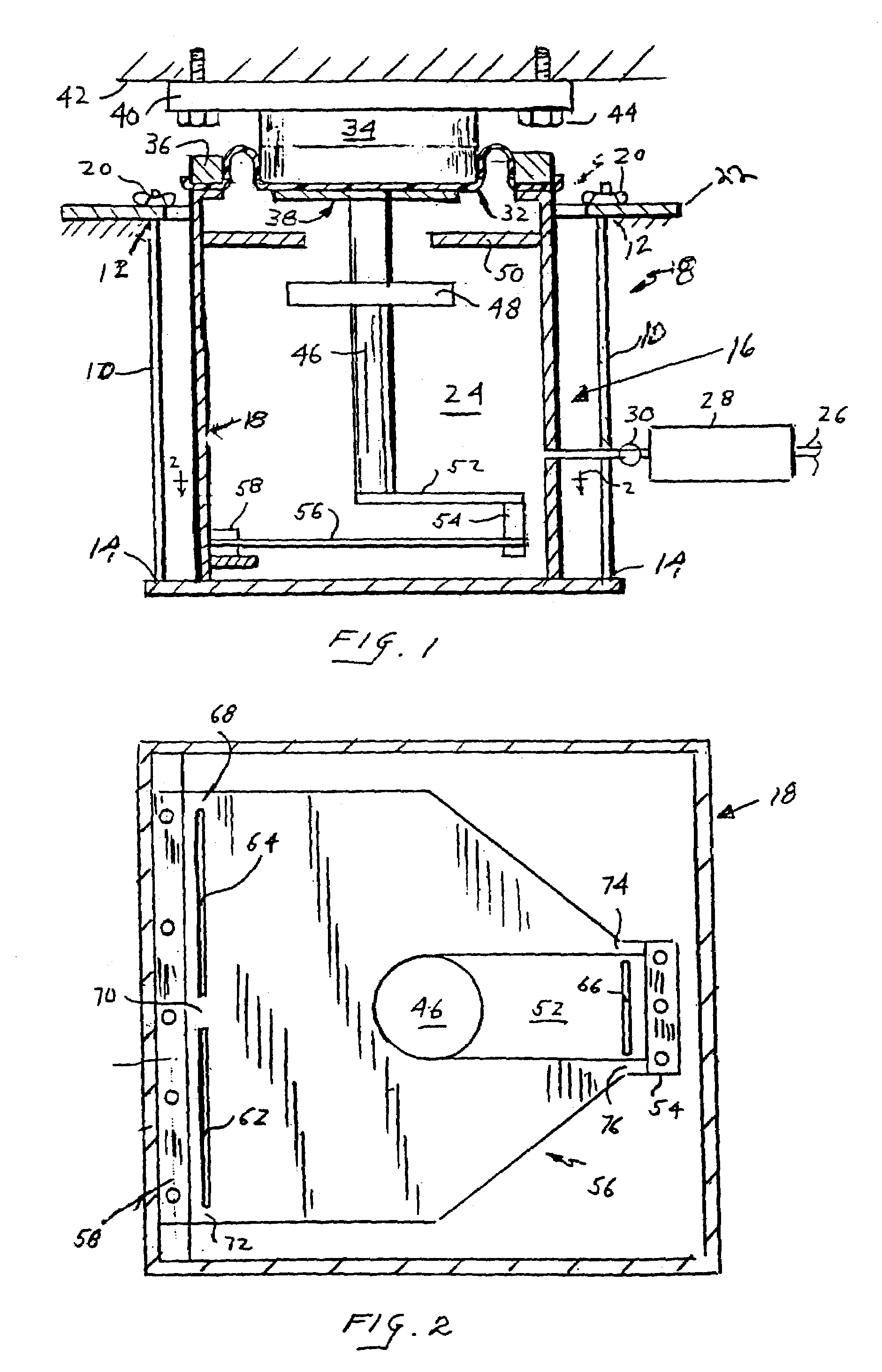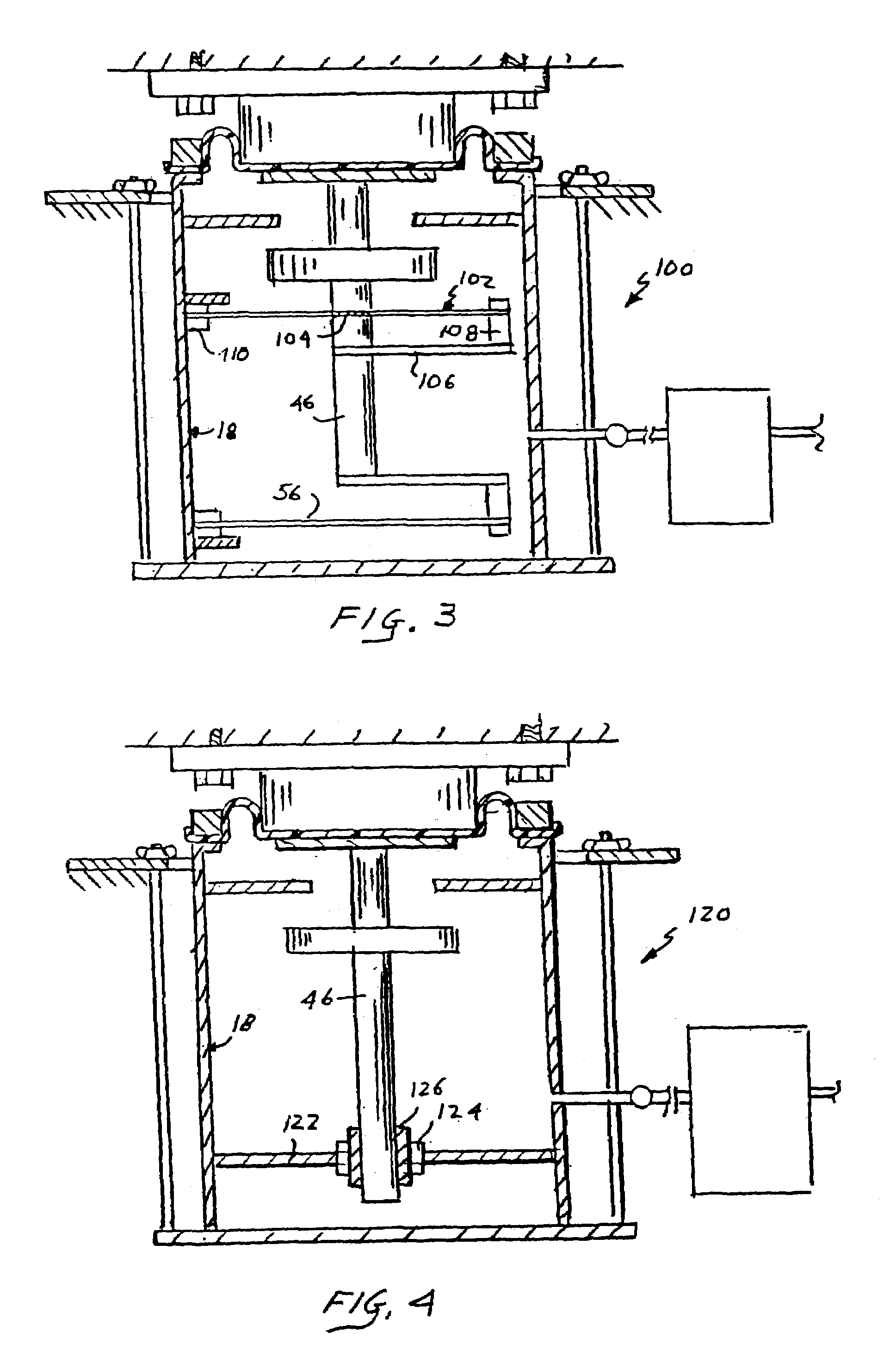High center of gravity stable pneumatic isolator
a pneumatic isolator and high center of gravity technology, applied in the field of pneumatic vibration isolation system, can solve the problems of inability to arbitrarily stiffen the isolator to tilt, the top plate of the isolator cannot be made extremely stiff to tilt, and the -up tilt can involve extremely high torque on the isolator top plate, so as to improve the tilt stability of the payload
- Summary
- Abstract
- Description
- Claims
- Application Information
AI Technical Summary
Benefits of technology
Problems solved by technology
Method used
Image
Examples
Embodiment Construction
)
[0026]Referring to FIG. 1, an isolator is shown generally at 8 and comprises three or more wires 10 (only two shown) each having an upper end 12 and a lower end 14. The lower ends, 14 of the wires 10 are flexibly secured to and support a vertical isolator assembly 16 which is comprised of a pressure vessel 18 and a piston 34 flexibly secured to the top of the vessel 18. The upper ends 12 of the wires 10 are flexibly secured to a structure 22 supported by earth. Adjusting screws 20 allow the length of the wires 10 to be adjusted to bring a top plate 40 parallel with the bottom surface of a payload 42. Inside of the vessel 18 is a pressurized volume of air 24. The pressure is controlled by a valving system (not shown) connected at 26. Air from the valving system flows through a second pressure vessel schematically shown at 28 (not to scale), and a flow restricting orifice 30 which together provide vertical damping in the isolator. The air volume of 28 typically has 2–5 times the volu...
PUM
 Login to View More
Login to View More Abstract
Description
Claims
Application Information
 Login to View More
Login to View More - R&D
- Intellectual Property
- Life Sciences
- Materials
- Tech Scout
- Unparalleled Data Quality
- Higher Quality Content
- 60% Fewer Hallucinations
Browse by: Latest US Patents, China's latest patents, Technical Efficacy Thesaurus, Application Domain, Technology Topic, Popular Technical Reports.
© 2025 PatSnap. All rights reserved.Legal|Privacy policy|Modern Slavery Act Transparency Statement|Sitemap|About US| Contact US: help@patsnap.com



